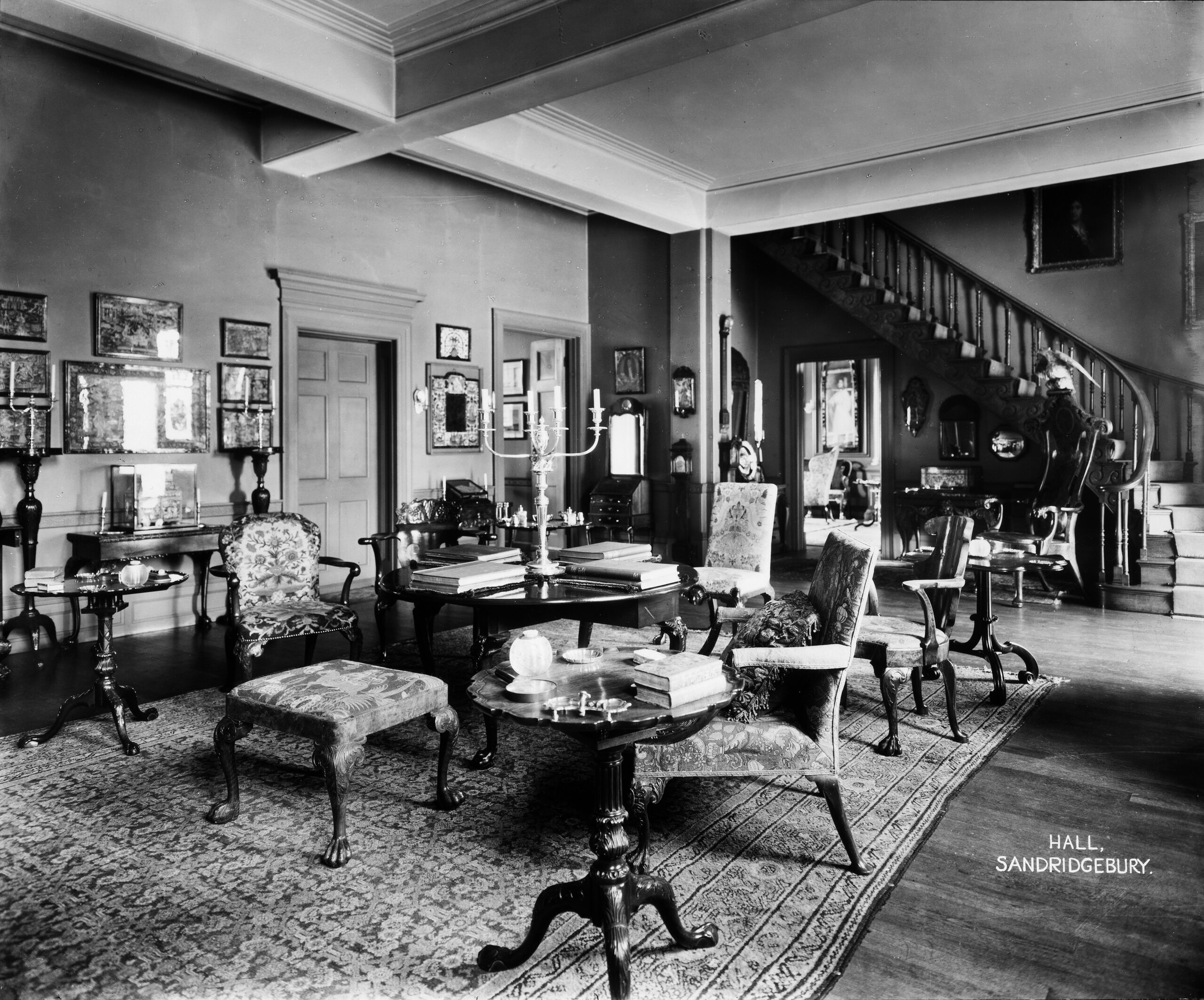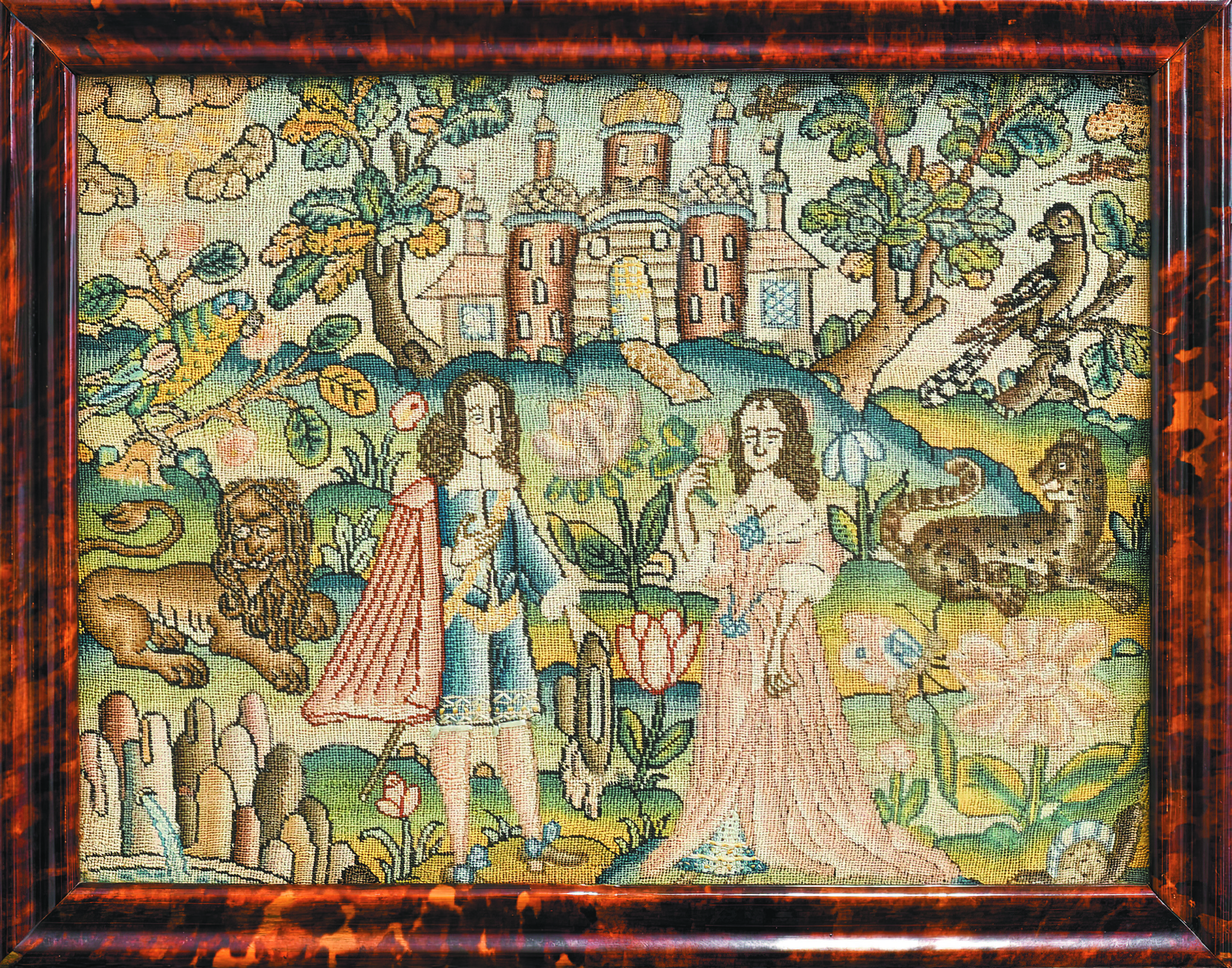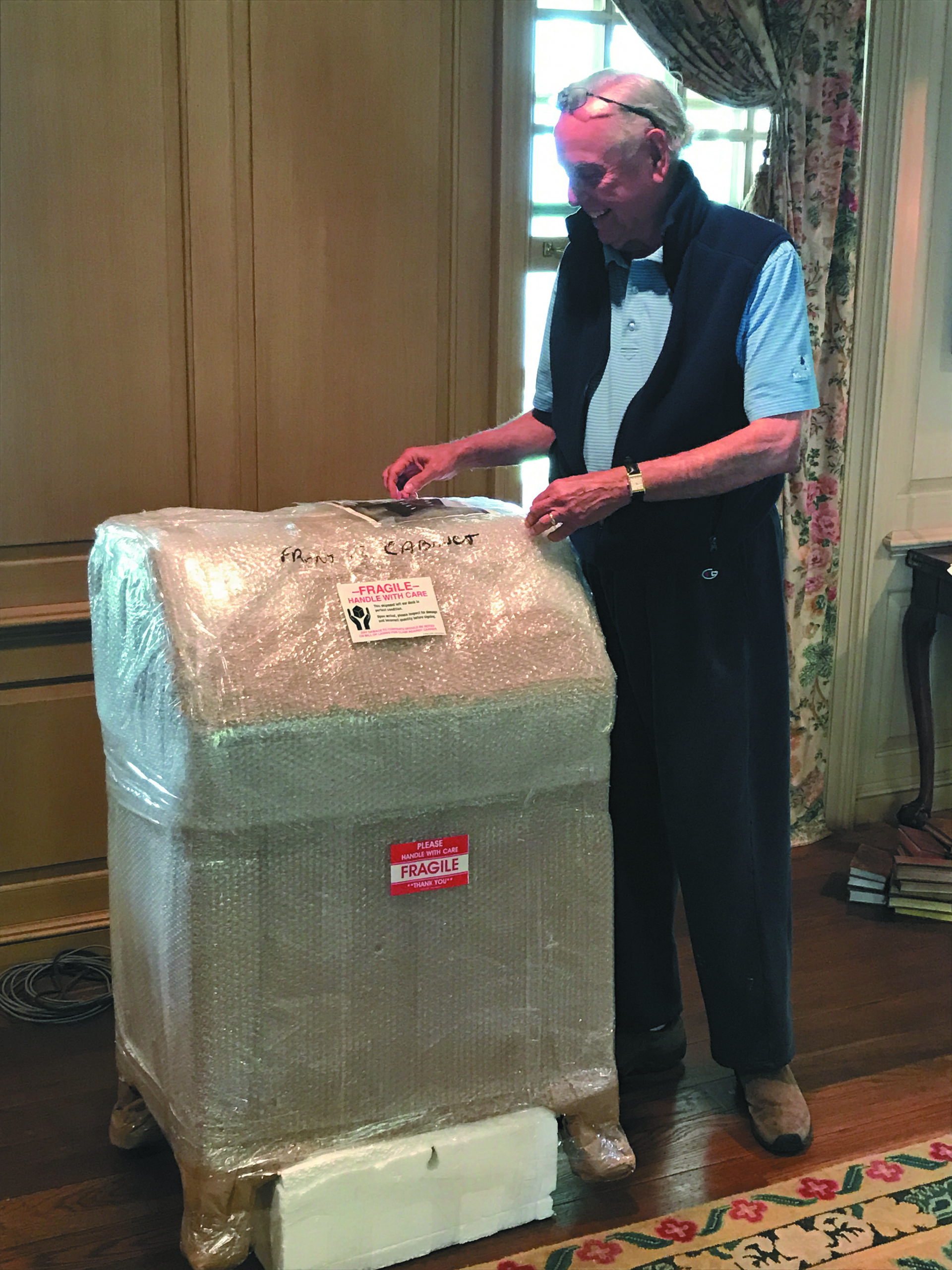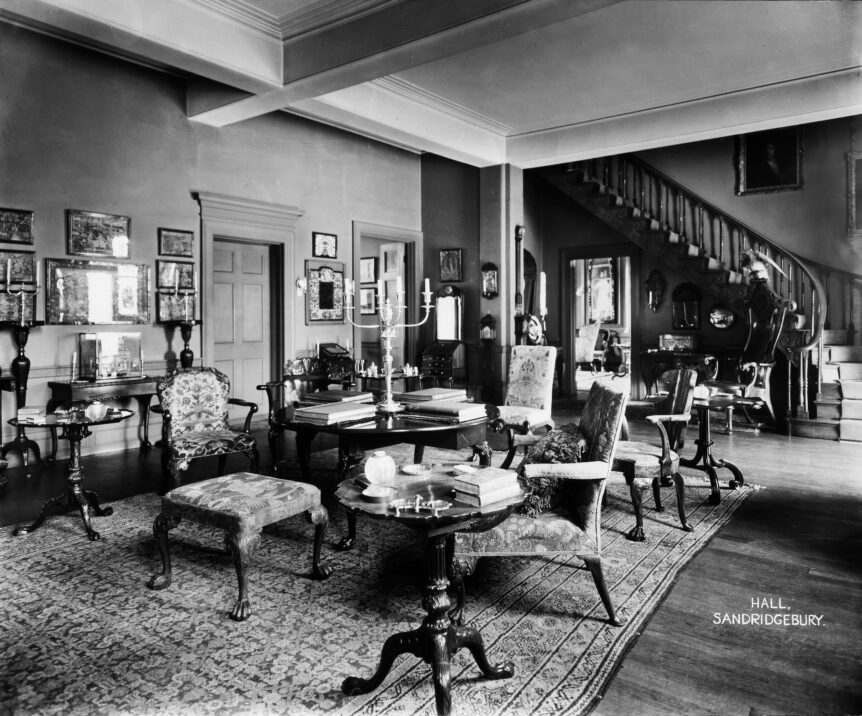
Sandridgebury, Percival Griffiths’s house in Hertfordshire, England, as pictured in The Magazine ANTIQUES in March 1931.
Percival D. Griffiths was passionate about collecting English furniture and needlework, forming one of the most important such private collections of its kind ever at Sandridgebury, his country house in Hertfordshire, England. Equally passionate about riding and hunting, Griffiths was killed in a fall from his horse in 1937. Two years later his extraordinary collection was disbursed, and sold by Christie’s. Now, to the extent possible, it is been re-assembled in a two-volume work to be published in February by Yale University Press. We spoke to Martin P. Levy of H. Blairman and Sons, the august London furniture dealers, and to William (Billy) DeGregorio, needlework specialist, about the project, some ten years in the making.
Please start by explaining how the project came about.
Martin P. Levy: In January 2013 collector John H. Bryan mentioned to me his idea of a book entirely devoted to Percival Griffiths’s renowned collections of English furniture and needlework. While the name Griffiths was well known, much of the collection he built in the early twentieth century was widely disbursed following his death. Mr. Bryan (as he was respectfully known to many in his circle) wanted to bring together in one place as much of the collection as possible. He’d had his interest piqued by two particular factors: the presence in his own collection of furniture and needlework with the illustrious Griffiths provenance and a consistent desire to share his passion with a wider audience.
The first task was identifying who might pull the project together. We needed scholars sympathetic to the material, but who also understood the market for antique furniture and needlework. By February 2013 Christian (Chris) Jussel, who had had decades of experience as a pre-eminent dealer in old English furniture, had agreed to join the project. We then approached Billy DeGregorio, an alumnus of the Bard Graduate Center in New York, who works with needlework specialist Titi Halle, whom Bryan hugely respected. By March Billy was on board, too.
Several years were then spent tracking down and photographing furniture that had passed through the market since the 1939 sale, with the community of furniture historians—auctioneers, collectors, curators, and dealers—enthusiastically weighing in with information and images as they made discoveries. Untraced pieces recorded in photographs tantalizingly still await rediscovery.
The great sadness is that John Bryan did not live to see this particular dream through to publication, passing away in 2018.

Mid-seventeenth-century English needlework picture depicting a courting couple in a landscape. Photograph by Rachel Robshaw, courtesy of Cora Ginsburg LLC, Sharon, Connecticut.
What made Griffiths the consummate collector?
ML: His determination to acquire pieces dating between the years 1660 and 1760, paying rigorous attention to excellent design, the finest craftsmanship, and pristine condition. The things that mattered to Griffiths still matter, but today’s collectors are also interested in provenance, designers, and makers—and those are some of the stories the book tells. One is that of the desk and bookcase featured in this issue (pp. 106–115), which was, in fact, pivotal to John Bryan’s own collecting. Drawn to the unostentatious character of this perfect example of English walnut furniture, which he first encountered at the Metropolitan Museum of Art in the 1970s (and which he would go visit whenever he was in New York), he was thrilled to add it to his own remarkable collection at Crab Tree Farm in Lake Bluff, Illinois, when the Met decided to deaccession it in 2017.

The base of the Unwin desk and bookcase being unpacked by John Bryan, 2017. Photograph by Jenny Saunt.
Griffiths’s taste for beautifully designed English furniture was matched by his passion for needlework, which will be highlighted in our next issue. Please give us a hint of what to expect.
William DeGregorio: For starters, the example shown here has never before been illustrated/published! It is one of four Griffiths pieces that came up at Tennants Auctioneers in March 2022, right before the deadline for the book. All were part of Griffiths’s posthumous sale at Christie’s, and all were purchased by a “Mrs. Oppenheimer.” We still have no idea who Mrs. Oppenheimer was. She may have been a dealer, or more likely a family friend, as several friends purchased pieces at the posthumous sale. But we’re still hoping to find out.

